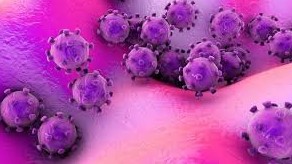News
The coronavirus that causes COVID-19 has been detected in a wastewater plant – H2O Building Services NEWS
It was only a matter of time say’s Graham Mann of H2O Building Services that the coronavirus that causes COVID-19 was detected in a wastewater plant.
The novel coronavirus that causes COVID-19 has been detected in wastewater in the Netherlands, according to RIVM National Institute for Public Health and the Environment research.
A small percentage of patients with COVID-19 have the novel coronavirus in their gastrointestinal tract, and thus excrete it in their faeces.
When their stool is flushed down the toilet, it ends up in the sewer, and then in the wastewater.
Research indicates that monitoring wastewater is a good strategy for detecting whether specific viral infections are present in a population.
RIVM has previously used this approach to detect the presence of norovirus, antibiotic-resistant bacteria, the poliovirus and the measles virus in wastewater.
Employees working in wastewater treatment plants are protected against viral infections, such as the coronavirus that causes COVID-19, if they follow the hygiene protocols.
Using molecular methods, the virus that causes COVID-19 was detected in wastewater at Amsterdam Schiphol Airport, in Tilburg and at the wastewater treatment plant in Kaatsheuvel. This plant treats the wastewater from Loon op Zand, the town where the first reported COVID-19 patient in the Netherlands lives.
From 17 February 2020 on, weekly wastewater samples were taken at Schiphol Airport.
During the first two weeks, the virus that causes COVID-19 was not detected. However, the genetic material from the virus was detected in the airport wastewater samples taken on 2, 9 and 16 March.
The first sample containing the virus was taken four days after the first person in the Netherlands tested positive for COVID-19 on 27 February.
Genetic material from the virus was detected in wastewater samples taken from the wastewater treatment plant in Tilburg on 3, 10 and 17 March.
Again, the first sample containing the virus was taken within the first week after the first confirmed cases occurred.
Of the wastewater samples taken from the wastewater treatment plant in Kaatsheuvel on 3 and 18 March, only the sample taken on 18 March contained genetic material from the virus that causes COVID-19.
Previous research has shown that the protective measures that are already the standard for people working at wastewater treatment plants provide sufficient protection against pathogens.
These measures are also effective against the virus that causes COVID-19.
People who work with wastewater should avoid direct contact with wastewater, and should avoid ingesting, swallowing and/or breathing in wastewater spray or mist.
During all activities that lead to possible contact with wastewater, they must wear personal protective equipment, including protective clothing, gloves, boots, safety glasses, a face mask and/or a FFP3 respirator mask.
These protective measures for safe working practices involving wastewater are listed in the occupational health and safety catalogue of the water management authorities. Moreover, like everyone, wastewater treatment plant personnel must maintain good hand hygiene: wash hands according to protocol, do not touch eyes, nose or mouth with unwashed hands, wash hands before eating and after each toilet visit, and use the inside of the elbow to cover sneezes or coughs.
When this horrendous and challenging situation is over our waste water treatment and trade effluent treatment surveys will never be the same again say’s Graham Mann Senior Water & Wastewater cost reduction consultant at H2o Building Services.
Where as in the past we have visited waste water discharge and treatment plants carrying out visual inspections without wearing full protective kit and masks capable of protecting against breathing in virus such as Coronavirus. These areas will now be designated as high risk which will mean companies will have to revise their procedures for maintenance and redesign plant to ensure that the discharges are sealed to prevent mist and droplets forming and released into the atmosphere.
The costs of additional and vital protection are going to be very substantial for businesses and the waste water treatment companies.
Water and waste water treatment contractors will also have to take additional costly precautions when working in and on sewers and waste water plants these extra costs may well have to be passed onto consumers.
